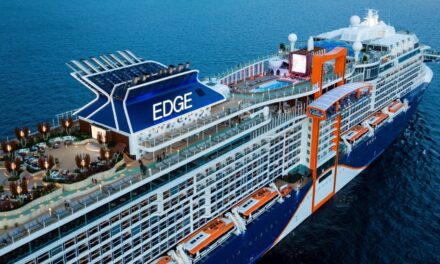Whether you’re a seasoned cruiser or setting sail for the first time, knowing what to expect during cruise embarkation and disembarkation can significantly enhance your adventure at sea.
In this ultimate guide to embarkation and disembarkation, we provide you with all the know-how needed to make your cruise experience smoother and more enjoyable.
What do embarkation and disembarkation mean on a cruise?
Cruise embarkation day is the exciting start of your cruise journey, where you board the ship and officially begin your vacation. Cruise lines know how to make this process seamless and stress-free, so you can concentrate on soaking up that magical moment when you arrive on your ship, ready to begin an adventure of a lifetime.
Cruise ship disembarkation, sometimes referred to as debarkation, is when you leave the cruise ship at the end of your holiday. The cruise disembarkation procedure is also well-organised to ensure smooth, safe and efficient transition from ship to shore.
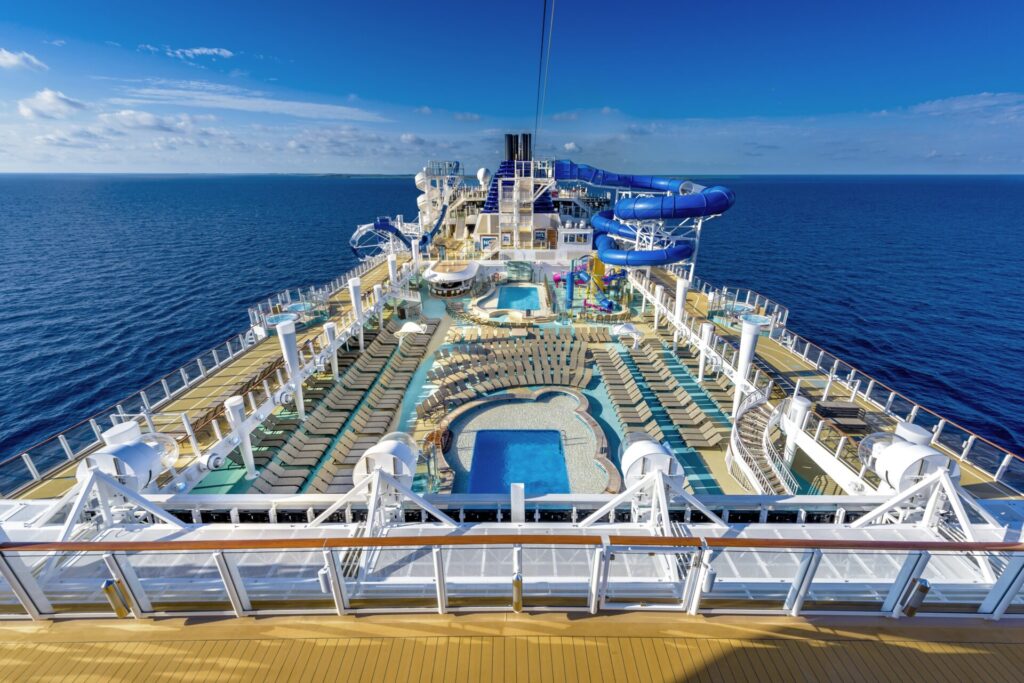
What happens when getting on and off a cruise ship?
Getting thousands of cruise guests and hundreds of crew members safely and comfortably on and off a cruise ship is a mighty challenge! Therefore, the cruise embarkation and disembarkation processes are very systematic.
Here’s what to expect on cruise embarkation and disembarkation days:
Cruise Embarkation
What time is embarkation on a cruise?
Cruise lines typically have designated cruise ship embarkation times, starting around mid-morning and continuing into the early afternoon.
The exact time can vary by cruise line and itinerary, so checking your cruise documents or the cruise line’s website for specific information is crucial. Arriving within your designated time slot helps streamline check-in and reduce waiting times.
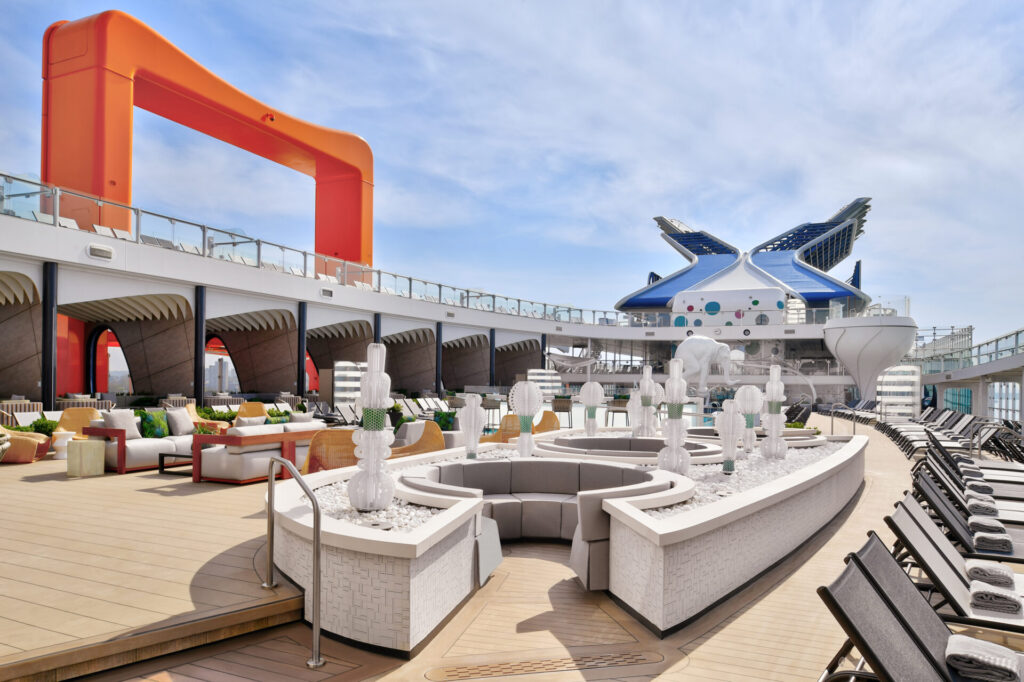
How long does it take to embark on a cruise ship?
The time needed for cruise ship embarkation can vary depending on factors like the size of the ship, the number of cruise guests, and the speed of the cruise ship embarkation procedures.
On average, you can expect anything from 30 minutes to a few hours from arriving at the cruise terminal to comfortably settling in your cabin.
The cruise embarkation procedure:
Check in: When you arrive at the cruise terminal, you’ll go through a check-in process that includes showing your identification, providing your cruise documents, and receiving your cruise key card (your ticket to everything on the ship).
Security screening: Just like at the airport, you’ll go through security screening. Your bags will be scanned, and you’ll pass through a metal detector.

Welcome onboard: Once you’ve cleared security, it’s time to board the ship! You’ll walk up the gangway to a warm reception from the crew. When embarking on a cruise ship, you’ll often be greeted with a welcome drink and sometimes live music or entertainment.
Lunch: Most cruise lines offer welcome lunch options in the main dining room or buffet area. It’s a great way to start your culinary journey on the ship.
If you have an upgraded package, you may be in for an extra treat. For example, Celebrity Cruises Concierge Class Embarkation Lunch is a deliciously luxurious a la carte option for those choosing Concierge Class when sailing with this cruise line.
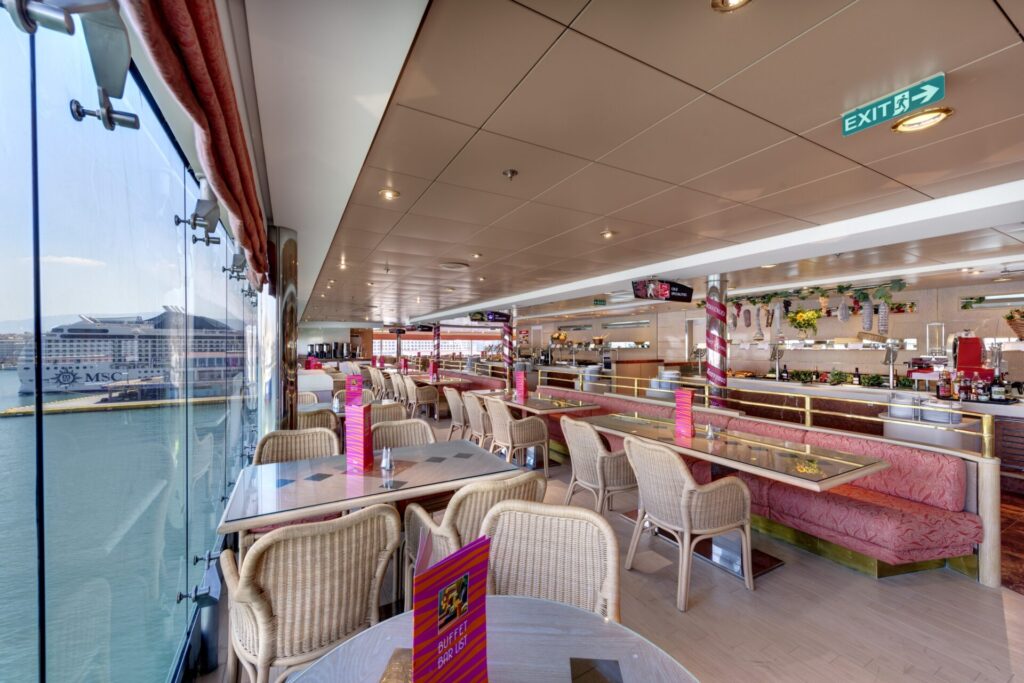
Muster drill: Before the ship sets sail, there will be a mandatory safety drill called the muster drill. Pay close attention, as this information is vital for your safety.
Sail Away: And then you’ll be off! As the ship departs, head to the deck to enjoy the sail-away party with music, drinks, and breathtaking views.
What happens if you miss your cruise ship embarkation?
Missing your cruise ship’s embarkation is every cruise guest’s nightmare, but don’t panic; there are steps to take if you find yourself in this situation:
Contact the cruise line: Notify the cruise line immediately. Its team will be able to provide guidance on how to catch up with the ship at the next port of call. However, be sure to check that embarkation is permitted by the local authorities at the cruise ship’s next stop before making any arrangements.
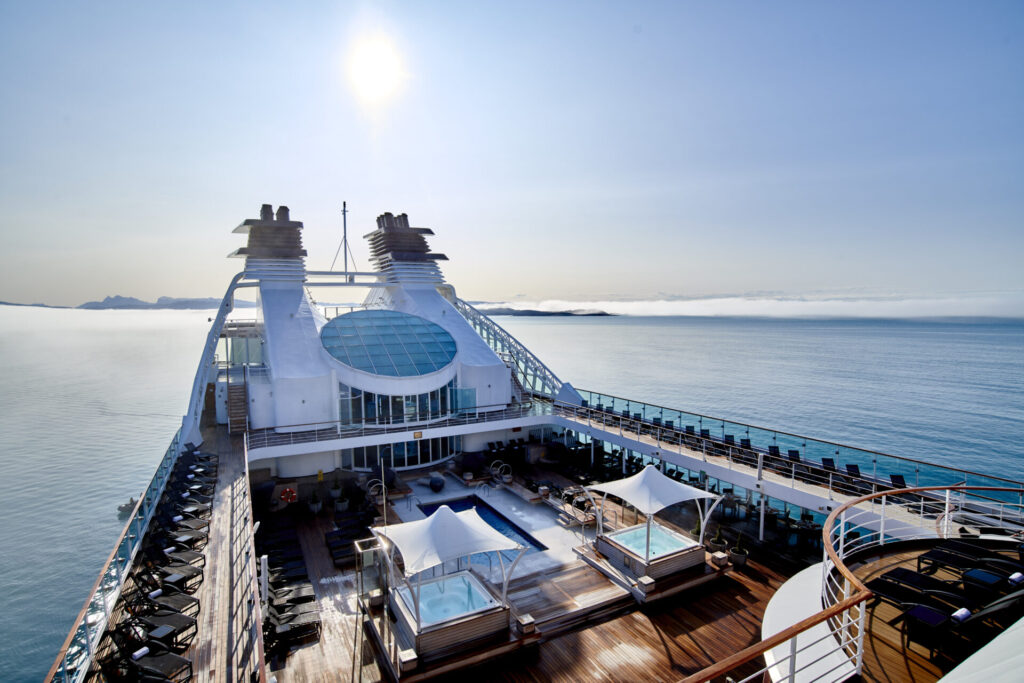
Speak to your travel insurers: If missing your cruise embarkation was not your fault, your travel insurance may cover your expenses, so ring them to check.
Make arrangements: You may need to arrange your own transportation to the next port. The cruise line can assist with this, or you can consult local travel agencies.
Stay in touch: Keep the cruise line updated on your progress so they can provide any necessary assistance or information.
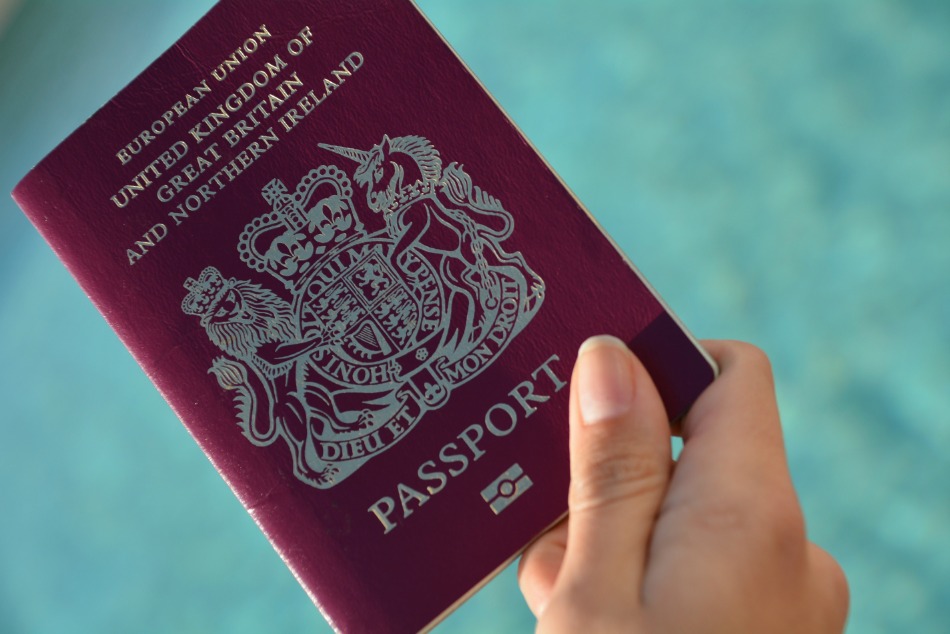
What to wear on cruise embarkation day
Embarkation day may be your first chance to make a fashionable impression, but it’s best to ensure you are comfortable. Here’s what we recommend:
Casual clothing: Dress comfortably in casual attire and wear comfortable shoes suitable for walking around the ship. Remember to check the weather at your embarkation port and dress accordingly.
Swimwear: If you’re eager to hit the pool or hot tub as soon as you board, pack your swimsuit in your hand luggage or wear it underneath your clothes. Many cruise ships have open pools on embarkation day.
Layers: It’s a good idea to layer your clothing since temperatures can vary on the ship. A light sweater or jacket can come in handy.
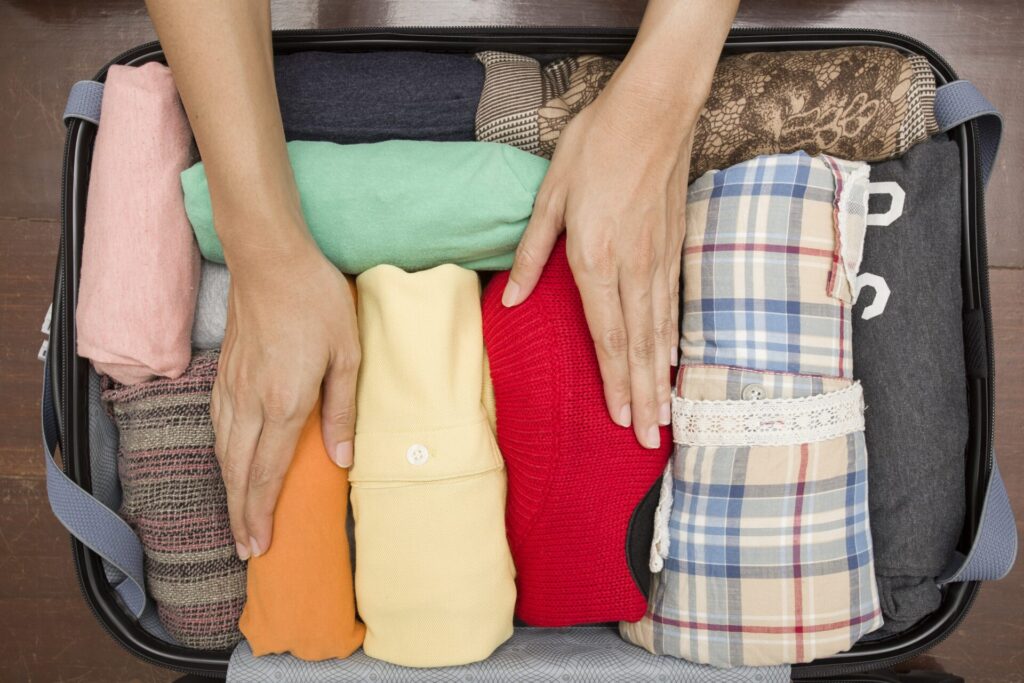
Cruise Disembarkation
What time is disembarkation on a cruise, and how long does it take?
Disembarkation times on a cruise can vary based on the cruise line’s schedule and the port of arrival. However, most cruise guests are asked to vacate their cabin in the morning, generally between 8 a.m. and 9 a.m.
Local authorities need to clear the vessel before any cruise guests get off. As a rough guide, you can expect to disembark the cruise ship within around 3 hours of arrival in port.
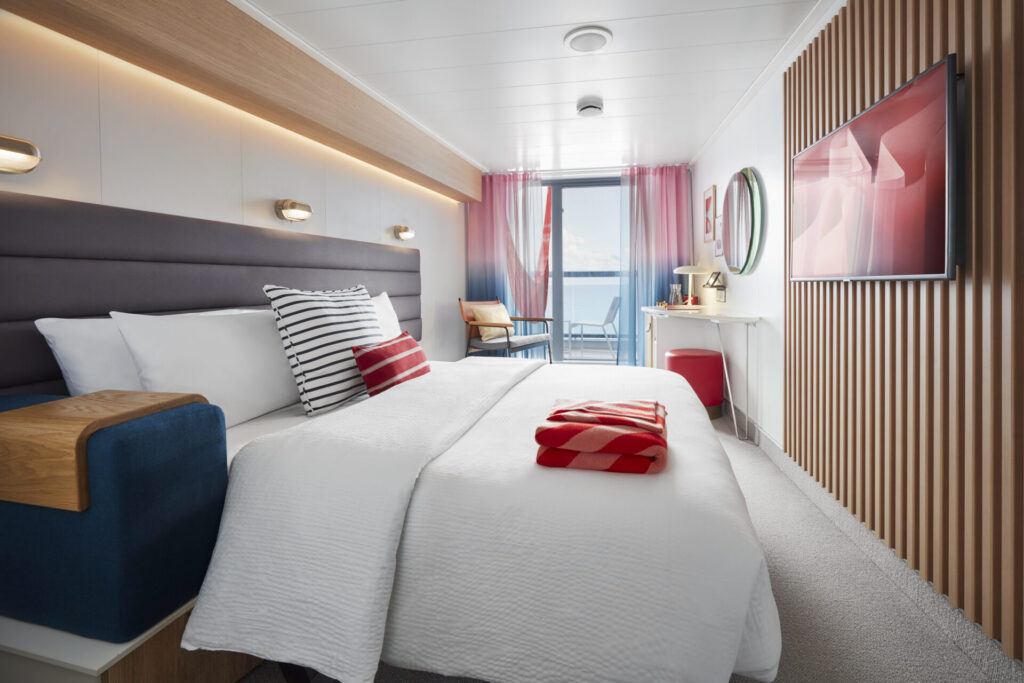
The cruise disembarkation procedure:
With so many cruise guests leaving the ship on disembarkation day, it is vital that you follow the instructions provided to ensure everyone disembarks safely.
Settling your onboard account: You will receive an invoice detailing what you owe from your onboard account (typically on the last night of your cruise). Paying via credit card is easiest. If you have any queries or wish to pay in cash, you’ll need to visit reception. Be sure to make time for this task, as queues can be long.
Disembarkation briefing: On your last day at sea, the cruise line will provide a briefing on cruise disembarkation procedures. This talk will explain the process and give you the necessary information about leaving the ship.
Typically, the cruise line will also provide written disembarkation information, which will inform you of things such as assigned cruise disembarkation time, breakfast slots and luggage procedure.

Luggage shipping: You’ll receive luggage tags with specific colours or numbers indicating when to disembark. Place these tags on your packed luggage and leave them outside your cabin the night before disembarkation.
The crew will then ensure their safe transit to shore for you to pick up at the terminal. Remember to keep essentials, such as travel documents, toiletries and clothes for the next day, in your hand luggage.
Alternatively, many cruise lines also offer ‘self-disembarkation’ where you transport your luggage yourself. This option can be faster but also cumbersome.
Disembarking: Cruise lines will call guests to disembark in groups based on their luggage tags or designated times. Follow their instructions, and you’ll exit the ship smoothly.
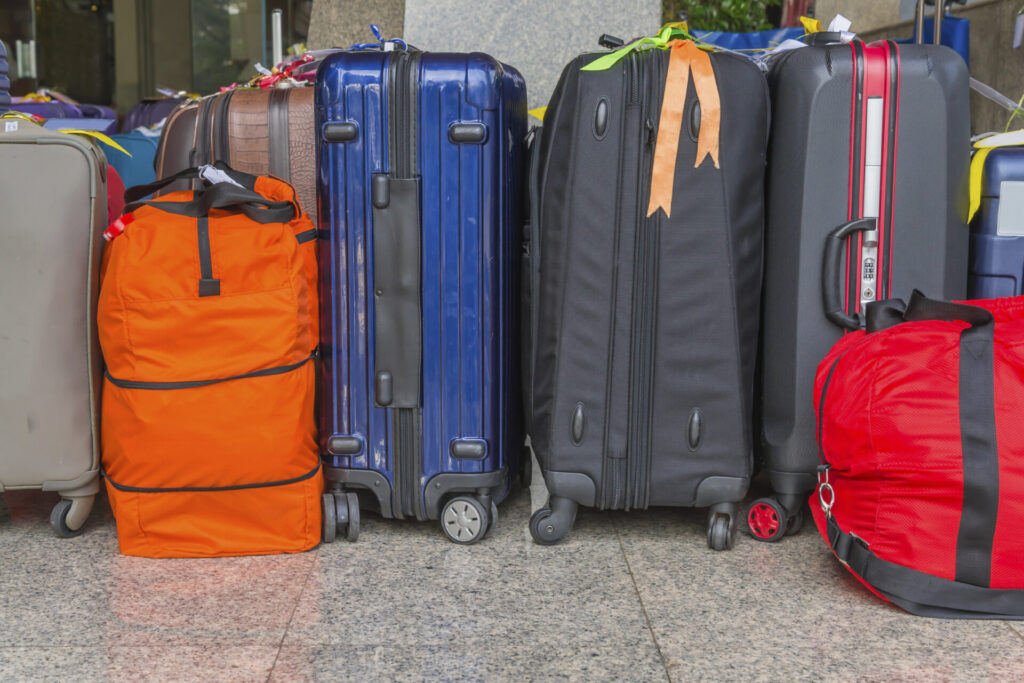
Customs and immigration: If you’re cruising internationally, you must clear customs and immigration. Remember to have your identification and any required documents ready.
Cruise ship embarkation and disembarkation are complex procedures for cruise lines. However, if you follow all the instructions provided, you’ll get on and off your cruise ship with ease and enjoy an incredible cruise adventure.
If you have any further questions about embarkation or disembarkation day, please get in contact with our cruise specialists.



